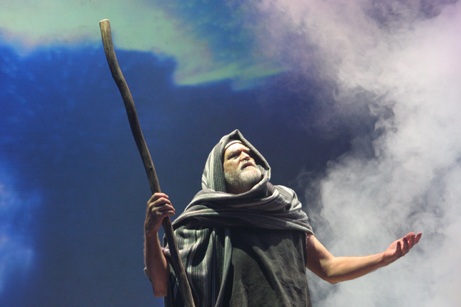Post Author: Bill Pratt
In part 1, we looked at the first sign that God promised to show the enslaved Israelites in order to prove that Moses was God’s true messenger. We now continue with the second sign.
Then the LORD said, “Put your hand inside your cloak.” So Moses put his hand into his cloak, and when he took it out, it was leprous, like snow. “Now put it back into your cloak,” he said. So Moses put his hand back into his cloak, and when he took it out, it was restored, like the rest of his flesh. (Ex 4:6-7 NIV)
Alfred Edersheim explains the meaning of the second sign in his Bible History: Old Testament:
The second sign shown to Moses bore direct reference to Israel. The hand which Moses was directed to put in his bosom became covered with leprosy; but the same hand, when a second time he thrust it in, was restored whole. This miraculous power of inflicting and removing a plague, universally admitted to come from God, showed that Moses could inflict and remove the severest judgments of God. But it spoke yet other “words” to the people. Israel, of whom the Lord had said unto Moses, “Carry them in thy bosom,” was the leprous hand. But as surely and as readily as it was restored when thrust again into Moses’ bosom, so would God bring them forth from the misery and desolateness of their state in Egypt, and restore them to their own land.
Finally, God offered a third sign as proof to the Israelites:
Then the LORD said, “If they do not believe you or pay attention to the first miraculous sign, they may believe the second. But if they do not believe these two signs or listen to you, take some water from the Nile and pour it on the dry ground. The water you take from the river will become blood on the ground.” (Ex 4:8-9 NIV)
Edersheim explains the significance of the third sign:
The third sign given to Moses, in which the water from the Nile when poured upon the ground was to become blood, would not only carry conviction to Israel, but bore special reference to the land of Egypt. The Nile, on which its whole fruitfulness depended, and which the Egyptians worshipped as divine, was to be changed into blood. Egypt and its gods were to be brought low before the absolute power which God would manifest.
In order to prove that Moses was a true prophet, God provided three miraculous signs that would not only be supernatural in nature, but would also communicate meaningful messages to the Israelites. These were not random miracles, but miracles that were significant to the recipients.
Did these signs actually serve their purpose? Yes. In verses 29-31, we learn that
Moses and Aaron brought together all the elders of the Israelites, and Aaron told them everything the LORD had said to Moses. He also performed the signs before the people, and they believed. (emphasis added)
So here is the takeaway. If a man living today claimed to be a true prophet of God, I would expect God to provide miraculous signs to authenticate him. If no miracles were forthcoming, then I would assume he is either a lunatic or a liar, but definitely not from God.
 Here is a typical conversation I’ve had on the blog with skeptics many times:
Here is a typical conversation I’ve had on the blog with skeptics many times: